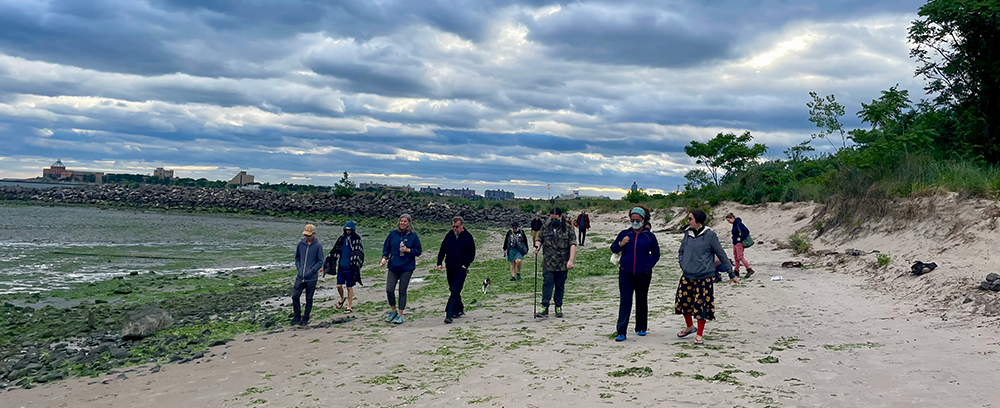Professor Lisa Jean Moore Explores Horseshoe Crabs on Plumb Beach
On a crisp June Saturday evening, Distinguished Professor of Sociology and Gender Studies Lisa Jean Moore led a group to the Plumb Beach Gateway National Recreation Area on Jamaica Bay to observe horseshoe crabs in their natural habitat.
Among the group were three former students, Crispian Thorne ’22 (Liberal Studies; Media Studies, Sociology minors), Anna Hernandez-Krol ’15 (Sociology, Latin American Studies), and Madeline Krol ’19 (Liberal Studies; Journalism, Gender Studies minors).

Moore takes a unique and story-like approach to the plight of the crabs in Catch and Release: The Enduring Yet Vulnerable Horseshoe Crab (2018), which explores the interspecies relationship between humans and horseshoe crabs.
“We use them as markers for understanding geologic time, collect them for agricultural fertilizer, and eat them as delicacies, capture them as bait, then rescue them for conservation, and categorize them as endangered,” reads the book’s summary.
One of the oldest species on the planet dating back 445 million years, the horseshoe crab has survived five mass extinctions. Their natural life span is more than 20 years unless they are used for bait by the commercial eel and conch fisheries. Or they’re among the 10–15% that die after release following the harvesting of their blood. Rich in copper, their blue blood is used by the pharmaceutical industry to test biotech products for bacteria.
And the natural habitat of the horseshoe crab at Plumb Beach in Brooklyn is at risk from an after effect of Hurricane Sandy—the sand used to replenish beach areas is less suitable for the crabs to burrow in and hide to lay their eggs.
In her approach to non-human species, Moore explores the threat humans pose to the crab’s future, but would like readers to reconsider the enmeshed human to non-human relationship by placing the crab at the center of the narrative instead of humans.
The event was sponsored by NYC H2O, whose mission is to inspire and educate New Yorkers of all ages to learn about, enjoy and protect their city’s local water ecology.